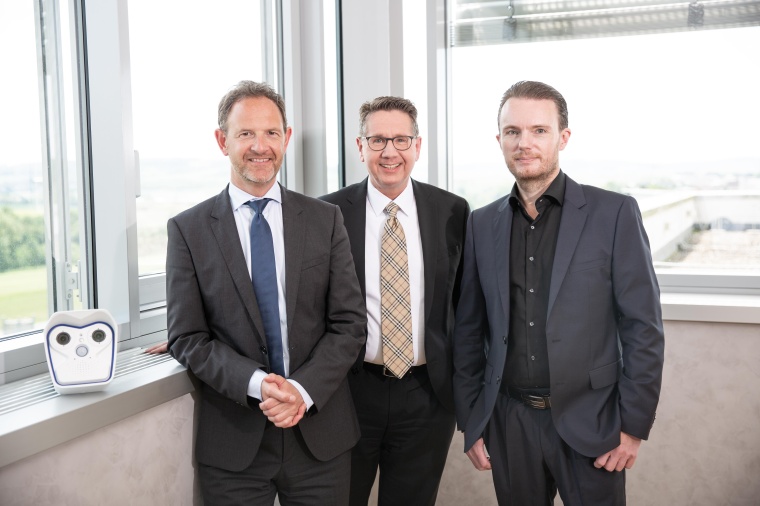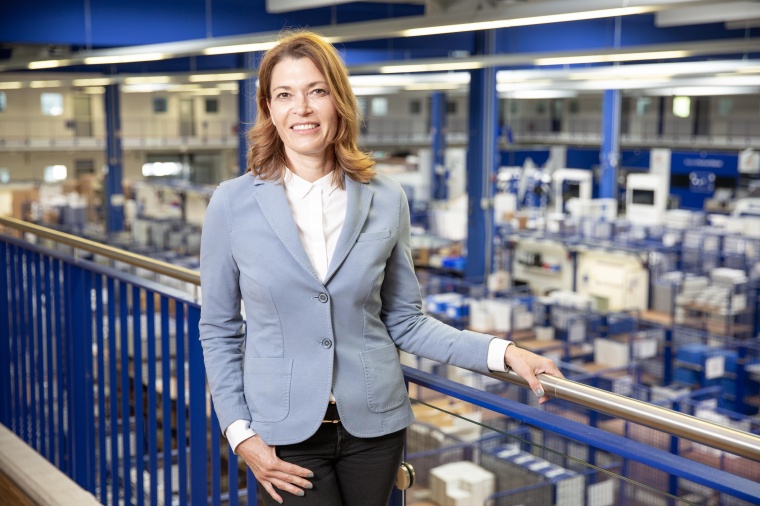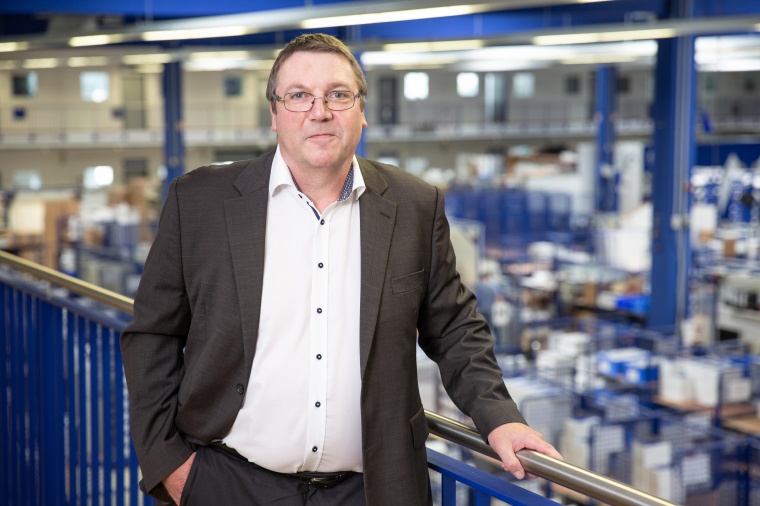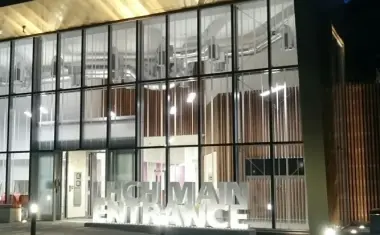Mobotix Opens Up for Partnerships and Gets Fit for the Future
Since the start of Mobotix in 2000, the company has built a great reputation for developing innovative video systems based on German engineering. The company has always stood out b...



Since the start of Mobotix in 2000, the company has built a great reputation for developing innovative video systems based on German engineering. The company has always stood out by doing things differently in the market with their proprietary systems. The limitation to their proprietary system was the reason why the company struggled recently to stay ahead of the pack in a market with fierce competition. During the last 12 months, under the leadership of their new CEO Thomas Lausten, Mobotix has taken measures to restructure the company’s operative units and its organization and to transform the company. At a visit to Mobotix’s headquarter in Langmeil, Germany, GIT SECURITY had the opportunity to talk to their CEO Thomas Lausten, Hartmut Sprave (CTO), Christiane Kampling (Head of Marketing) and Thomas Dieregsweiler, Head of Product Management, about Mobotix’s plans for the future.
GIT SECURITY: Mr. Lausten, can you summarize your first year as the CEO of Mobotix in a few sentences?
Thomas Lausten: The last year has been an extremely intense time for us. I have met most of our 400 colleagues and partners globally, including the Americas, the Middle East and Australia. It was very inspiring and encouraging to see the passion of the people working for our company and to develop new plans together with our partners. Our largest Global Partner Conference ever in Langmeil was a highlight and just recently our Innovation Summit Europe in Valencia with almost 200 flagship customers and alliance and channel partners reassured me that we are on the right way to get fit for the future.
Can you outline the overall strategy for Mobotix and let us know how far you are on this way?
Thomas Lausten: We don`t see ourselves as a classic manufacturer of cameras. In terms of IoT, our cameras are computers with lenses, working intelligently and with embedded storage capacities. We distinctly characterize Mobotix as a pioneering global company that is developing solutions based on the German way of engineering and approaching things as this is appreciated as being particularly innovative and of high quality. We stay with our core values and with our DNA, including our proprietary software and chips and the MxPEG Video Codec for example. It was specially developed for security applications and has enormous advantages in times of cyber attacks and cyber threats. We will keep our original DNA but at the same time we open the company up for partners and third-party integration and we expand our scope to complementary products and a consulting and software offering.
Mr. Sprave, as the new Chief Technology Officer, can you explain what the new more open approach means for Mobotix?
Hartmut Sprave: The strategy means that we move from a closed Mobotix product universe to opening up our systems. This will enable us to enter new markets and our partners can react more flexibly to specific needs and cover a wider range of projects with our systems. We now include the H.264/ONVIF industry standard in our products so they can fulfill customer needs and it is possible to use our cameras within third-party video management systems and integrate them more easily in projects. In the future as part of our product development we will develop interfaces together with our integration partners to make integration projects easier and to unlock the possibilities artificial intelligence offers.
The actual Mobotix camera portfolio includes indoor and outdoor camera plus thermal cameras but is far from complete. Do you plan to extend your product range?
Thomas Dieregsweiler: Yes, we are reacting to the demand from integrators and installers who often have asked for standard products when it comes to tenders where the specifications are outside of our product range. Starting in July we will have a range of best-of-breed standard components including products with moving parts like PTZ cameras, bullet and fixed-dome cameras with IR sensors and WDR features. While our core camera offering will stay the M16 series, this supplementing product range will come under the name of Mobotix Move. The first cameras we will offer under the Mobotix Move brand are bullet and fixed-dome cameras with motorized varifocal lenses and two PTZ cameras with 30x and 40x optical zoom lenses.
Are the new Mobotix Move products manufactured in Germany?
Thomas Dieregsweiler: No, we specify, test and qualify and fully support all Mobotix Move products, but they are manufactured abroad. Our customers can be sure that we don’t lose our product DNA and all products branded Mobotix Move will be delivered and supported according to the same high-quality standards our customers Mobotix products are known for.
You mentioned cyber security. What advantage do you think your products have here compared to others and isn’t it a risk to open up your systems for third-party integration?
Thomas Lausten: Cyber security has become a concern changing the market’s approach to video technology. Customers are asking: Where are the pictures going? Who has access to them? Mobotix cameras are very well prepared in this respect. We see many institutions replacing their products and trust in products that are constructed under German laws. We have developed the Cactus Concept that includes our measurements to increase cyber security. One part is our Cyber Protection Guide, a guideline that describes how administrators can implement secure system configurations. It explains what you need to do in order to protect your entire video infrastructure against third-party access. Opening up our proprietary technology towards other companies’ systems doesn’t mean that there aren’t any boundaries necessary. Our proprietary software and chips remain important – they are of fundamental importance for secure and reliable systems. This is, after all, the great heritage of Dr. Ralf Hinkel and his ideas.
Hartmut Sprave: On the technical side, to have control of our own SoC gives us an advantage when it comes to cyber security but also when we work on interface development. It is not only easier for us to develop interfaces for our own software and for the integration with third-party software and VMS, but also helps us to create artificial intelligence solutions.
What are your plans on artificial intelligence?
Hartmut Sprave: We want to increase the intelligence in the camera even further, meaning our decentralized concept, and to implement even more functionality directly into the camera. We now have a complete processor core available for this. Future software updates will enable it to perform totally new functions, such as recognizing license plates, faces or voices. There are many more ways in which we can use this resource. The additional processing power will mainly be used for the implementation of added value and additional services. For the AI development we can use Konica Minolta’s resources and we must establish a cooperation with the University of Kaiserslautern close to our headquarter.
Thomas Dieregsweiler: The decentralized intelligence in our camera system is crucial for AI and makes it easier for our products to communicate with other sensors and devices in the network to help achieve solutions “beyond human vision.” These solutions include reliably detecting threats by combining various sensor technologies, as well as independently initiating actions to defend against such threats. Meanwhile, the state-of-the-art data analysis function, located on the camera itself, helps users increase process efficiency and develop innovative business models.
Konica Minolta is the majority shareholder of Mobotix. What synergies can we expect in the future?
Thomas Lausten: Mobotix and Konica Minolta have just entered into a technology development agreement in which Mobotix‘s hardware and software technologies will be further developed. Konica Minolta will allocate an initial amount of 1.5 million Euro to our technology development. In the context of a distribution partnership, Konica Minolta has already deployed Mobotix cameras in Japan, China and France at production facilities, distribution centers and in vehicles for security and surveillance, production process monitoring and other applications. An additional benefit is that Konica Minolta has also assigned significant sales staff to focus on promoting the use of Mobotix technology through end-customers and their channel partners. The long-term perspective for further developments is very positive for us. We are still working independently and we have already started to realize many of our new ideas.
With the new strategy integrators and end-users that will play a bigger role in the future. How does this and the cooperation with partners affect the marketing?
Christiane Kampling: We do not sell directly to end-users but they will play a vital role for us. We want to use their feedback not only for our product development but also to help our partners. Co-marketing with our partners will be a valuable tool for us in the future. And by addressing the end-users we hope to see a pull from the market through our marketing. Our main goal is to show our value proposition and the advantages to work with Mobotix to all market participants and through the whole customer journey.
most read


GIT SECURITY AWARD 2026 - The winners have been announced!
GIT SECURITY AWARD 2026: The best safety and security solutions of the year - now an overview of all winners

Liverpool Heart and Chest Hospital Transforms Security with Verkada’s Hybrid Cloud Technology
NHS Trust boosts safety and efficiency with Verkada’s cloud-managed cameras and AI-powered incident response

Airbus Defence and Space: Security as a strategic pillar of Europe's defense capability
Airbus Defence and Space protects sites, technologies and employees with modern security and cyber solutions - strengthening Europe's resilience in uncertain times

Assa Abloy's battery-powered Aperio KL100 secures lockers
Boost workplace security and operational flexibility by securing more than just doors.









